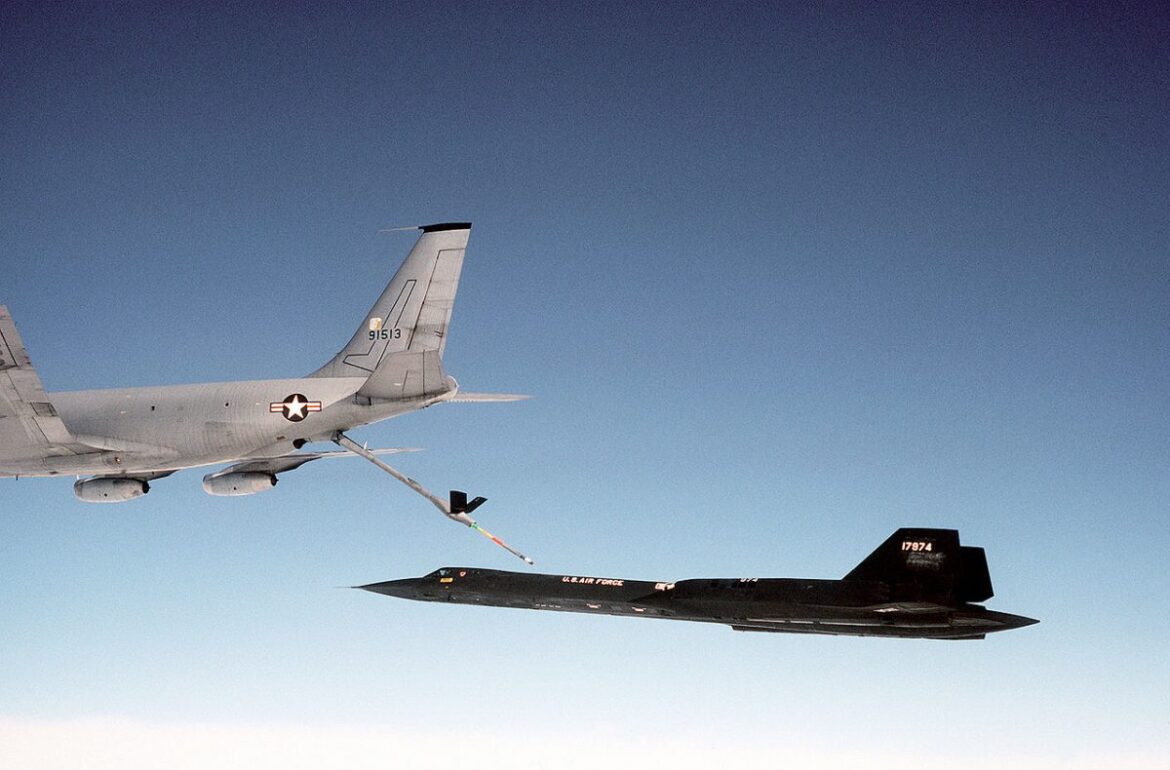Members of the SR-71 Blackbird crew have reported that on occasion, they came down in search of a tanker, not so much because they were running out of gas but because their gas was getting too hot
Colonel Richard “Butch” Sheffield, the Reconnaissance Systems Officer (RSO) for the SR-71 Blackbird, noted in his unpublished book “The Very First” that the pressure suits of the Blackbird crew members began to warm up a little when the aircraft’s fuel ran low. On the other hand, adding more fuel caused them to cool down. Therefore, the fuel was used as a heat sink for the SR-71.
Since the SR-71 was an incredibly engineered, complex aircraft, they had to figure out a means for the Blackbird to handle the massive amount of heat produced by its fast flight.
‘Flying at over Mach 3 is a thermal problem. Everything is too hot, including any air you slow down to interact with the vehicle. You are trying to make the vehicle (and the pilots inside) survive for hours in a pizza oven while they are getting cozy with two 500 million BTU/hour flamethrowers,’ Iain McClatchie, an aviation and turbine engine expert, says on Quora.
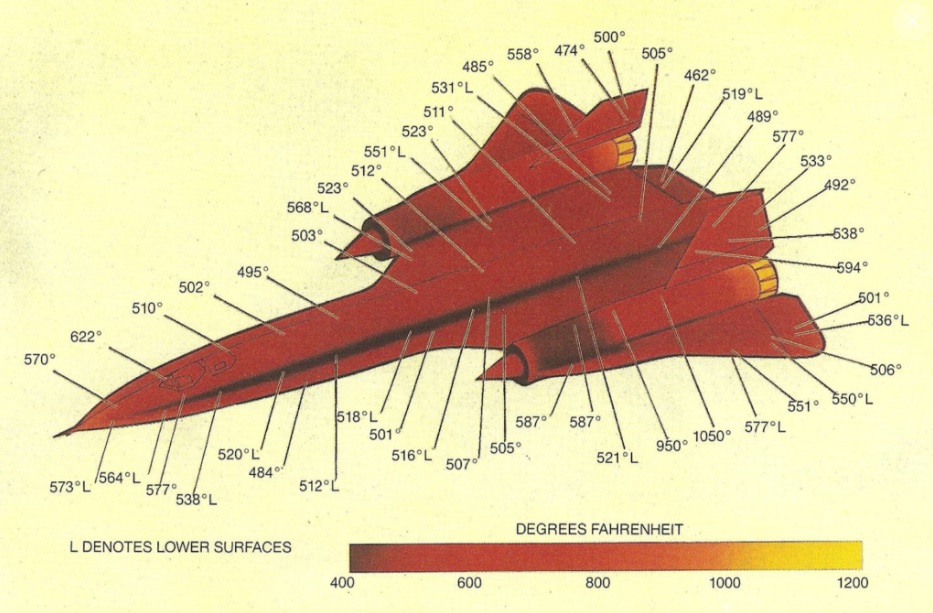
‘When you look at a graph like this, your first impression might be that the vehicle is this glowing hot thing slicing through the icy -52 C air at 80,000 feet. So naturally, you think of the air as cooling the airplane down.
‘Not so much. The air has to change to the vehicle’s speed to touch the vehicle, and that requires work. That work heats the air. At Mach 3.2, the stagnation temperature of the air is 740 F, which is hotter than every (labeled) point on the above graph! (The nacelles around the engine afterburners, unlabeled, are in fact hotter than the air around them.)
‘I know; it seems unbelievable. Use this handy graph and see for yourself.
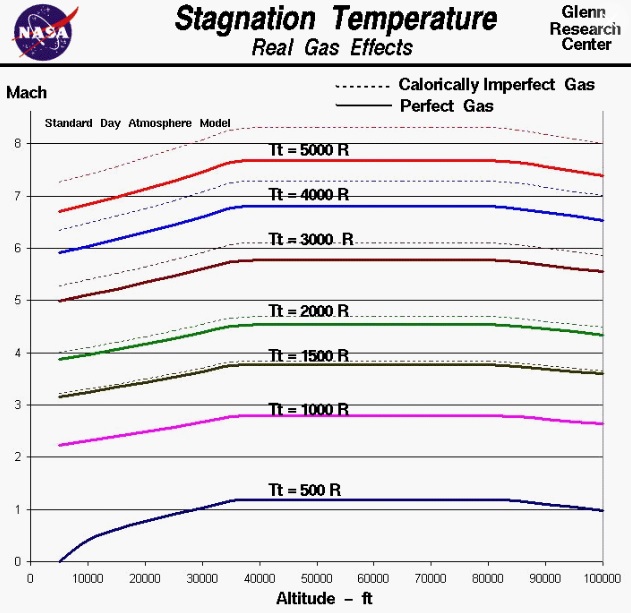
‘Basically, the shocks from the airplane heat the air around it, but the vehicle itself cools the air in contact with it down. Once the airplane passes by, all that disturbed air tumbles to a stop, leaving a path of hot air through the upper atmosphere.
‘So back to life in the pizza oven. The basic solution is (a) leave most of the airframe hot and make it out of stuff like titanium and stainless steel that are strong when hot, and (b) start with a large amount of cold fuel and then dump heat from critical areas into the fuel before burning it. When decoupling from an aerial tanker, half the SR-71’s weight was fuel.
‘A special type of kerosene fuel, JP-7, was developed for the SR-71 to be good as a heat sink. It boils away at 285 °C at 1-atmosphere pressure, which is the upper end of the kerosene range. When the plane tanked up at 30,000 feet, the kerosene might start below 0 C. At speed, it would be used to cool the avionics and cockpit, and by the time it arrived at the engine, it would get up to 177 °C. It was then used as hydraulic fluid for the various engine actuators, primarily the variable geometry nozzle. By the time it got to the fuel injectors, it had gotten up to 316 °C (but wasn’t boiling because it was at several atmospheres of pressure). At cruise, the burner cans were at 330 kPa (about 3.3x the pressure at sea level), so the fuel still didn’t boil as it left the nozzles but the droplets would have evaporated very quickly.’
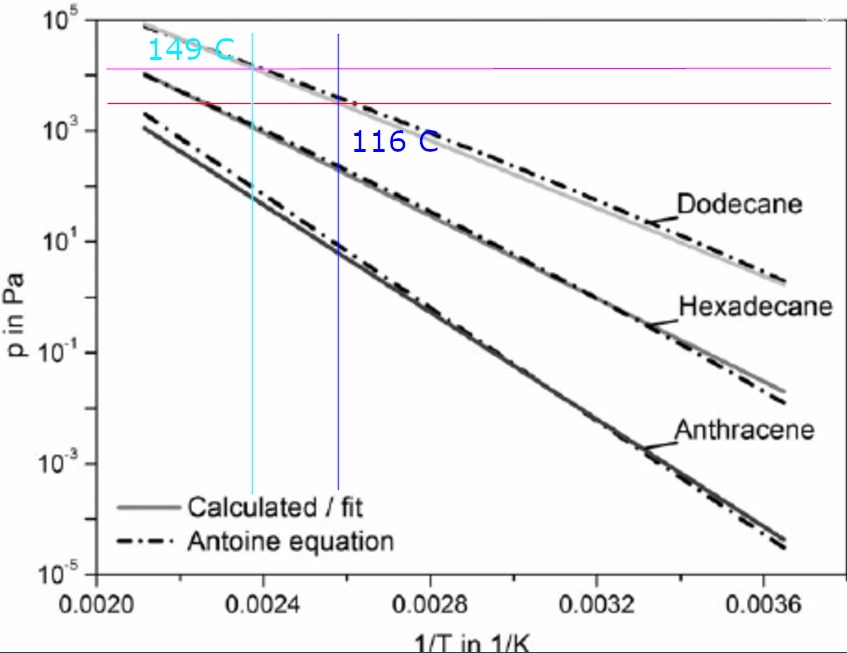
McClatchie continues;
‘JP-7 is mostly a mix of hydrocarbons centered around C12H26 (dodecane). The graph above shows the vapor pressure of dodecane as a function of reciprocal absolute temperature. That makes it a bit hard to read. 0.0024, for instance, is 417 Kelvin, which is 143 Celsius. Liquids start to boil when their vapor pressure is greater than the ambient pressure. I’ve labeled the boiling point of dodecane at 2900 Pa, which is the absolute pressure at 80,000 feet, and 13000 Pa, which is the minimum absolute pressure in the SR-71 fuel tanks. Note that the dodecane component of JP-7 starts to boil at 162 °C at sea level… quite a bit less than the advertised 285 °C, which is actually when the stuff boils away completely.
‘The flash point of JP-7 is 60 °C. The fuel was held in tanks whose walls were formed of the skin of the vehicle. Since fuel vapor against the top skin of the vehicle would be well over 60 °C during cruise, if air was allowed in any ignition source in the tank, it would cause deflagration and destruction of the vehicle. Instead, nitrogen gas from a 260-liter liquid nitrogen dewar was used to pressurize the tanks. This would have mostly been an issue during descent when the ambient pressure rose and extra gas was needed to fill the tank ullage space.
‘But nitrogen gas fill was not enough. The fuel was heated in the tank by the bottom surface of the vehicle, just as water in a pot is heated by the flame on a stove. In this case, the fluid was over a meter deep in the tank and consequently took longer than a pot to boil. At ambient cruise pressure, the fuel would have begun to simmer in the tanks at 116 °C. By pressurizing the tank to 10 kPa over ambient, the tolerable tank temperature rose by 33 °C. This temperature limit put a time limit on how long the SR-71 could stay at cruise before it began to lose fuel to boiling.
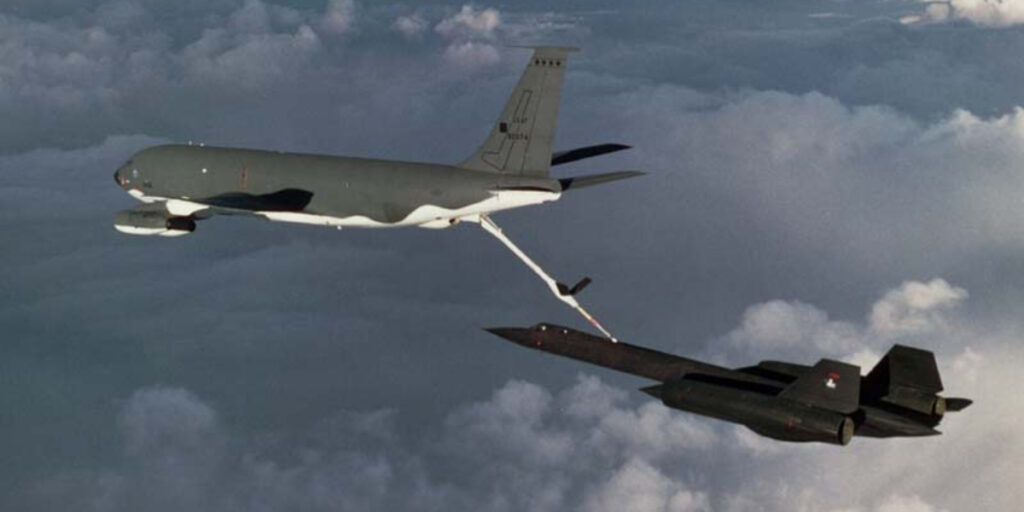
‘The fuel pumps in the tanks raised the fuel pressure so that boiling was no longer a problem once in the fuel system. The limit of how much heat could be absorbed by the fuel was rather set by its coking temperature — the temperature at which the fuel begins to deposit varnish on the interior of whatever plumbing it is in. I don’t have a specific number on JP-7, but it must be higher than 316 C. There was another experimental hydrocarbon blend developed called JP-900, which resists coking up to 482 °C. This was intended for a higher-speed vehicle that was never built.
‘They were not able to get the wind tunnel behavior to match the actual behavior of the airplane. Kelly Johnson speculated that this was because, during cruise, the fuel sitting against the lower skin of the fuselage and inner wing kept that portion of the airframe cooler than the upper skin. This caused the vehicle to bow from the differential temperature expansion, which would have made the wings slightly anhedral and would have made the vehicle unstable in roll.’
McClatchie concludes;
‘Heating of the fuel while in the tanks caused yet another problem. As I said earlier, the engines can take the fuel at a maximum temperature of 177 °C. So as the fuel in the tanks heats up, its ability to absorb heat on the way to the engine decreases. Flight crews have said that they sometimes came down looking for a tanker, not so much because they were running out of gas but because their gas was getting too hot.
‘Using fuel as a heat sink is common in fast jets. The Concorde did it, the F-15, F-16, F-18, F-22, and F-35 do it, and probably all other supersonic aircraft.’
Check out the Habubrats SR-71 and Born into the Wilde Blue Yonder Facebook pages for further Blackbird photos and stories.
Photo by Unknown, NASA, U.S. Air Force and Lockheed Martin

